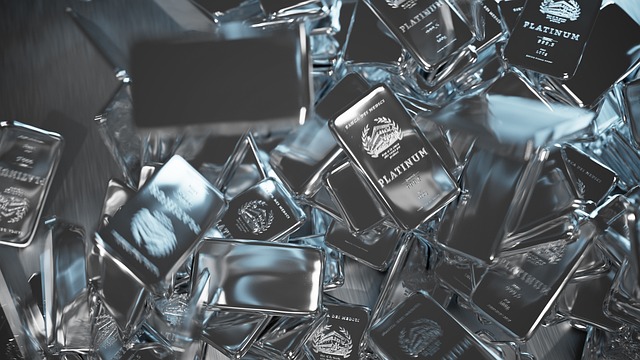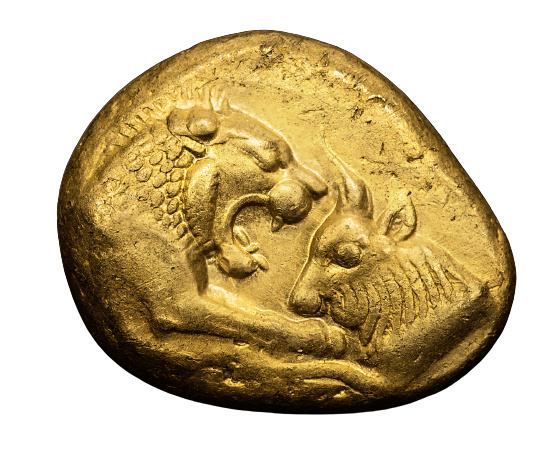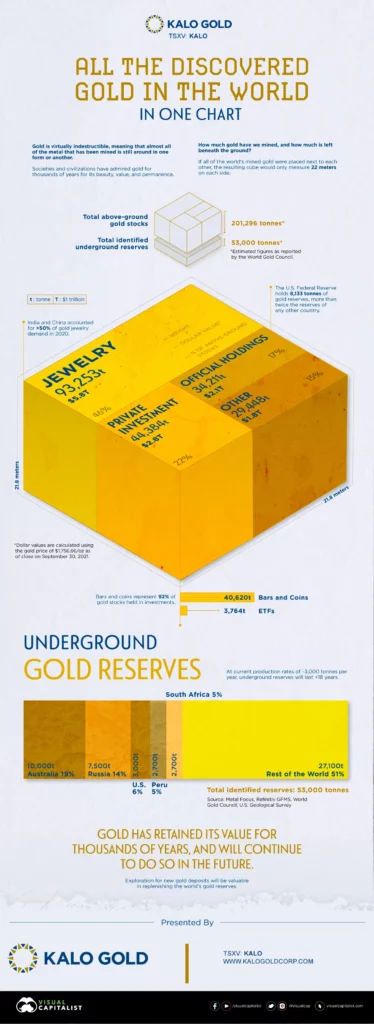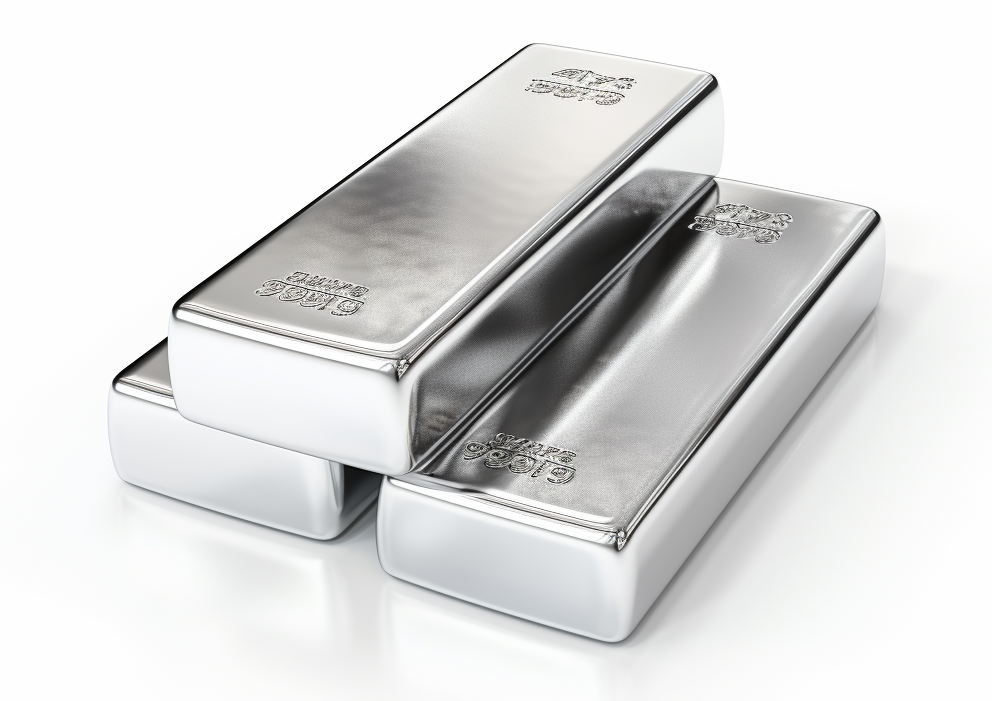We know you’re curious:
Is it better to invest in gold or platinum? Is platinum truly rarer than gold? Today, we’re going to discuss an age-old question that many of us have.
These two precious metals have been head-turners for centuries. From being fashioned into exquisite jewelry to powering the latest tech, they’ve pretty much rocked our world.
But when it comes to rarity, how rare is platinum compared to gold? Let’s dive in and find out!
What Is Platinum?
“Platinum” means “little silver”.
When Spanish conquerors in South America first saw this sparkling white metal, they have initially mistaken it for an impure form of silver due to its similar appearance.
Little did they know they had uncovered a far more precious and elusive treasure.
In case you’ve forgotten your high school chemistry, platinum is symbolized by the chemical element Pt on the periodic table.
It boasts a unique set of properties that makes it different from other metals in the world. It is corrosion-resistant and won’t tarnish or lose its shine, even after centuries.
Since ancient times, the “little silver” has intrigued civilizations across the globe. With their quest for beauty and luxury, the Egyptians decorated their tombs and temples with platinum jewelry.
They named it the “metal of the gods,” recognizing its exceptional rarity and value.

The big platinum revelation came around the 16th century when Spanish explorers mining for gold in South America kept finding it.
At first, they saw it as a nuisance and discarded it, having no idea about the gem they were throwing away. It took a few more centuries for people to fully learn the real worth of this metal.
Fast forward to the present, and platinum is now the superstar of various industries.
Fun fact: It plays a critical role in the automotive sector, especially catalytic converters. These little devices cut down harmful emissions, making our rides greener.
Platinum’s unique ability to facilitate chemical reactions and resist extreme conditions makes it a key player in promoting sustainability and cleaner air.
But its use doesn’t stop there.
It finds its way into the heart of cutting-edge technologies, including electronics, fuel cells, and medical devices.
Its conductivity, stability, and biocompatibility make it an ideal candidate for many applications, pushing the boundaries of innovation and scientific progress.
Now, even with all these practical uses, platinum has retained its sparkle in the realm of beauty and decoration.
Its unique color and rareness make it a favorite for creating all kinds of stunning jewelry.
Think gorgeous engagement rings and sophisticated watches — platinum’s timeless elegance and lasting beauty take these treasures up a notch.
What Is Gold?
Without a doubt, this precious metal has always been a symbol of wealth and power.
Its appeal, crossing time and borders, lies in its radiant yellow color, unmatched malleability, and resistance to tarnishing.
When you think about it, gold’s been the fancy go-to for the big shots throughout history.
Think pharaohs of Egypt or the kings and queens of Europe. Gold crowns, scepters, holy artifacts, you name it. It was all about the bling and the power that came with it.
But it isn’t just for show. It’s had a big part to play in the rise and fall of empires, how trade rolled, and finding a stable economy.
The first recorded use of this precious metal as currency dates back to 600 B.C.
The Lydians, who lived in what’s now Turkey, were the pioneers of gold coins, setting the stage for the monetary systems we’re familiar with today.

Now, one thing about gold that really makes it, well, golden, is its rarity. But how rare?
Believe it or not, but all the gold humans dug up could fit in just three Olympic-sized swimming pools. No wonder kingdoms were so crazy about it —it was the ticket to big riches and fame.
But it’s not just a dusty old relic from the past. It’s got a big part to play in today’s world. When the economy’s tanking, gold’s where it’s at for stability and keeping value.
And let’s not forget its use in art and design. This metal has always been a hit with artists and craftspeople, from killer jewelry to fancy sculptures.
Fun fact: Pure gold’s actually too soft to use in jewelry. It has to be mixed with other metals to toughen up and make those gorgeous pieces you enjoy wearing.
Platinum vs. Gold: Which Is Rarer?
Defining the rarity of these precious metals is a challenging task.
It’s more like a complex dance between where they’re found geologically, how much of them we’re pulling up from the earth, and how much we’ve got tucked away in reserves.
So, let’s take a look at the numbers, which tell a fascinating story about just how rare or abundant these two shiny wonders really are.
In 2021 alone, we humans dug up a whopping 3,200 metric tons of gold. And that’s not all; there are still about 54,000 metric tons of the stuff left in the ground.

In contrast, platinum claims its distinction as a rarer find.
Gold might be the heavy-hitter in production, but platinum’s global turnout is just a fraction of that.
The total platinum production amounted to approximately 190 metric tons in 2022. That’s why it has this allure like it’s a hidden treasure.
Why the big difference, you may ask? Well, it all boils down to geology.
The “little silver” predominantly appears in a select few regions, with South Africa and Russia accounting for most global production.
These geological hotspots house intricate layers of rock formations, and getting them out of those isn’t exactly a walk in the park.
On the other hand, gold enjoys a more widespread distribution across the globe. It’s pretty much everywhere, from quartz veins to river deposits.
Sure, not all spots are equal, but gold’s friendly nature means it’s easier to find and mine.
The extraction process also plays a significant role in determining rarity.
Mining platinum is like solving a tricky puzzle – it takes resources, expertise, time, and patience. That’s what makes it a coveted prize.

Mining gold, however, is easier. We’ve got different ways to mine it; with advanced tech, we can extract more of it more efficiently.
But remember, it’s not just about what’s rarer.
It’s also about what the market wants, what investors are feeling, and cultural values. All these factors matter when we talk about precious metals.
Platinum might be rarer, but its extensive use in stuff like catalytic converters affects its market appeal.
Gold, though, has the charm of both scarcity and historical symbolism, making it a steady bet for value. Plus, it’s known to be a great hedge during uncertain economic times.
But let’s talk about those in more detail.
Factors Influencing Rarity and Value
Here are 5 factors that affect the value and rarity of gold and platinum precious metals:
Primary Sources
The roots of their rarity begin at the source.
Platinum prefers to keep to itself, choosing to hang out in just a few spots around the globe — like South Africa and Russia.
These limited sources require specialized mining techniques, often involving deep underground operations and complex refining processes.
Gold, on the other hand, is a bit more outgoing. It’s scattered across various continents, making it easier to come by than its platinum cousin.
Geological Factors
Platinum’s usually found in specific rock formations and often only in teeny-tiny amounts.
This makes the treasure hunt a bit like looking for a needle in a haystack — adding to its elusive reputation.
Gold, though, is a bit less picky. It can pop up in various geological formations — quartz veins, river deposits, metamorphic rocks, you name it.
These diverse formations make it more available and, to some extent, more abundant.
Extraction Challenges
The truth is, unearthing these hidden treasures is no easy feat.
As we’ve already mentioned earlier, for platinum, it means venturing deep underground and contending with complex engineering.

Then, once it’s out, there’s the intricate process of refining it to separate it from other metals.
Gold, while still requiring significant resources, gives us a bit more flexibility with techniques — from open-pit mining to underground operations, making it slightly easier to bring to the surface.
Economic Viability
Platinum mining, with all its complexities and challenges, is a pricy affair, contributing to its rarer status.
Add a relatively lower market demand, and you’ve got a perfect storm of scarcity.
Conversely, gold is generally more economical to mine thanks to its more accessible sources, more demand, and historical significance.
Technological Advancements
New technologies mean we’re getting smarter about how we mine — reaching places and making profits from sources we previously couldn’t touch.
Whether getting more gold from challenging deposits or increasing platinum recovery from lower-grade ores, tech is shaking up the rarity game.
So…
Is Platinum Rarer Than Gold?
The short answer is: Yes, platinum is more rare than gold indeed.
This rarity is about where it’s found, how it’s extracted, and how much we can get our hands on.
It is found in only a few places around the world and in specific rock formations. That makes getting it out trickier than gold.
Also, we produce way less platinum each year than gold, which just highlights how scarce it really is.
But remember, while it’s cool to be rare, it’s not the only thing that matters when we talk about precious metals.
So, while the ‘little silver’ may be rarer, the yellow metal still shines the brightest.
It has proven its resilience and stability throughout the ages, consistently standing as a strong and reliable hedge against inflation and economic instability.
Now:
It’s high time you dipped your toes into this market with our #1 recommended Gold IRA company in the US, Augusta Precious Metals.
They will educate you on how to use metals to diversify your portfolio without any pressure to buy.
Should you decide to buy precious metals in an IRA, they will walk you through each step of the process and handle 95% of the paperwork with you.
Give the Augusta team a call at 833-989-1952 to learn more.
You can also grab their guide here and get a FREE GOLD coin when you open a gold IRA account with them.




